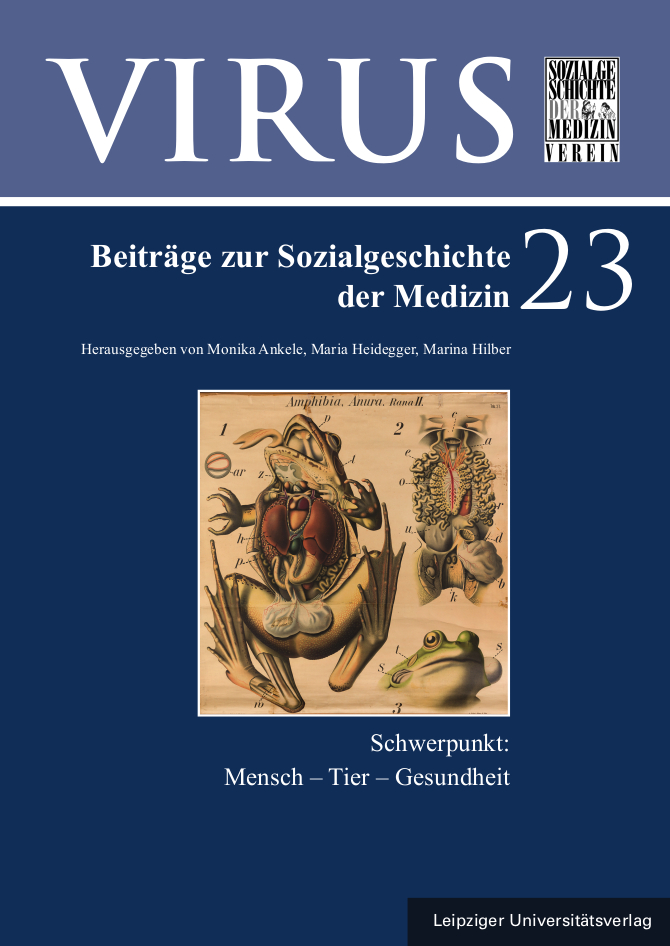
VIRUS Band 23, pp. 15-32, 2025/04/24
Schwerpunkt: Mensch - Tier - Gesundheit

Animals’ vulnerability has increasingly gained attention in academic and public debates. How-ever, still, the treatment of animals in various contexts is remarkably divergent. This is also reflected in practices related to medicine. In different contexts, they are framed in different ways and become either objectified, e. g., as risk potential (vectors) or resources (lab animals), or subjectified as patients. Thus, they are treated in various ways even though they might have similar bodies. For instance, rats are kept as pets, used in animal experiments, or are the target of pest control. Health crises may change these roles and restructure practices. During the Covid-19 pandemic, however, such roles were possibly altered, but a tendency emerged to stabilize practices that promised to provide an alleged certainty. The One Health approach seeks to harmonize and align the health of humans and animals in a shared environment. However, it runs the risk to neglect tensions between various health-related needs as well as to neglect the moral infrastructure, in which animals are framed as risk potential, resource, or as co-patients. Such framings imply different ways and degrees of the visibility and recogniz a-bility of vulnerability. Ethical reflections must not be restricted to the flourishing of individual ani mals but need to include the processes of objectification and subjectification.
Keywords: One Health, human-animal studies, vulnerability, zoonoses, Europe, 21st century